Adds to evidence of Homo luzonensis direct ties to extant Filipino tribes, Ayta Magbukon, Agta
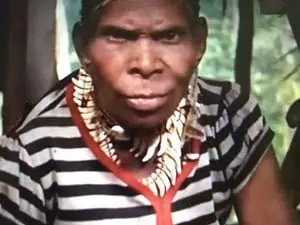 many regard H. luzonensis as one of the most important scientific findings of our time. Meanwhile, for Filipinos, the discovery of our very own “ancient cousin” has not only given us more information to fill the gaps in our prehistory, but also more questions to ask and answer in the coming years. — Mark Jefferson Plata, flipscience.ph September 2020
many regard H. luzonensis as one of the most important scientific findings of our time. Meanwhile, for Filipinos, the discovery of our very own “ancient cousin” has not only given us more information to fill the gaps in our prehistory, but also more questions to ask and answer in the coming years. — Mark Jefferson Plata, flipscience.ph September 2020
In 2019 a magnificent discovery was made in the Philippines of an entirely new Hominin species dubbed Homo Luzonensis. The discovery is credited to a team of Filipino archaeologists led by Dr. Armand Mijares.
An excavation sponsored by the Museum of the Philippines, occurred at the Callao Cave from 1979 to 1981, but nothing was unearthed. 22 years later. Dr. Mijares, started a second digging project, and the discovery was made. First a few teeth, then some bones.
From CNN, April 11, 2019,
Meet the Filipino professor who led the discovery of a new human-linked species
The Filipino archaeologist continued his studies, beginning in 2002 his doctorate studies in Archaeology and Palaeoanthropology at the Australian National University, where he worked under the tutelage of Peter Bellwood. Bellwood is famous for his Out-of-Taiwan (OOT) hypothesis of the migration of Austronesians — the race believed to be ancestors of Filipinos.
Mijares has given the Luzon man a nickname. Taking after Donald Johanson who nicknamed Australopithecus afarensis “Lucy,” Mijares decided to call his discovery “Ubag.” Ironically, Ubag is a sort of an ape man legendary creature cited in Filipino folklore and literature.
Interestingly, when the bones were first discovered they were thought to be of diminutive modern humans. Many tribes whose populations of strikingly similar archaic characteristics are inhabitants of this northern Philippines region.
More from the Filipino science journal, flipscience.ph,
Homo Luzonensis: Digging Into The Story Of Our Fossilized ‘Cousins’
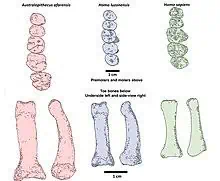 The first known fossils of Homo luzonensis were found in Cagayan’s Callao Cave in 2007. Named after the island of Luzon, they were originally thought to have been from modern humans when they were identified in 2010.
The first known fossils of Homo luzonensis were found in Cagayan’s Callao Cave in 2007. Named after the island of Luzon, they were originally thought to have been from modern humans when they were identified in 2010.
Since then, archaeologists have found and identified several other specimens. This fueled the research efforts that would later lead to its identification as an entirely separate species from modern humans (H. sapiens). Dr. Armand Mijares, a professor and archaeologist at the University of the Philippines, spearheaded the study and its constituent expeditions.
A related tribe, nearly next door to the Ayta Magbukon are the Agta people.
From LakeForest.edu,
What is happening to the Agta is a sad tale. Who can help if their government will not?
The Agta people look differently than the average Filipino. They are darker skinned and generally have blacker shorter curly hair. They are called the Agta Negritos of the Philippines.
Further on morphology, from culturepop.com,
The Aeta: Indigenous Tribe of the Philippines
Agta or Ayta are an indigenous people who live in scattered, isolated mountainous parts of Luzon, Philippines. They are considered to be Negritos, who are dark to very dark brown-skinned and tend to have features such as a small stature, small frame, curly to kinky afro-like textured hair…
The morphological similarities between Homo luzonensis and current isolated Filipino tribes, is striking. More from iflscience.com,
Mysterious Ancient Dwarf Hominid Was 31 Years Old When It Died
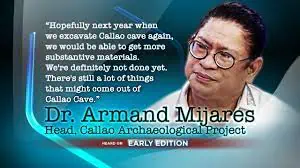 Homo luzonensis, the miniature hominid was probably less than 1.2 meters (4 feet) tall when fully grown and may have shared some of its characteristics with modern-day chimpanzees.
Homo luzonensis, the miniature hominid was probably less than 1.2 meters (4 feet) tall when fully grown and may have shared some of its characteristics with modern-day chimpanzees.
Beyond superficial characteristics, we now have solid evidence from dental measurements and growth patterns that establishes a direct link between Homo luzonensis and current inhabitants.
Continuing:
they noticed that H. luzonensis had a dental eruption pattern similar to that of chimps, but which is also present in about five percent of the modern human population.
This, in turn, suggests that the species might have had an ape-like developmental pattern.
Melanesia Negritos and Negroes from the African continent show an “ape-like development pattern…”
Though, no citation is given, the five percent of “the modern human population” mentioned with ape-like dental patterns seems to be referencing previous studies by Holly Smith a researcher at GWU.
From a study published in the Journal of Physical Anthropology in 1994, conducted by Holly Smith, University of Michigan,
Patterns of Dental Development in Homo, Australopithecus, Pan, and Gorilla
Researchers have noted in the past, that African and Afro-American children have ape-like dental growth patterns.
 the human test population (black children from southern Africa) differs from that described by the human growth standards (white children from North America).
the human test population (black children from southern Africa) differs from that described by the human growth standards (white children from North America).
In comparing “central tendencies”…
Results suggested that gracile australopithecines and some early Homo tended to resemble African apes in pattern of formation of teeth, but that Neanderthals closely resembled modern humans…
Smith, who is now a research professor in anthropology at George Washington University (bio), had published an earlier study in the National Library of Medicine, pubmed.nih.gov, that found…
central tendency discrimination (CTD) is tested for its ability to recognize ape and human patterns of dental development in 789 subadult hominoids. Tooth development of a modern human sample (665 black southern Africans)…
Overall, CTD can be considered reliable (accuracy of 92% for humans and 88% for apes) when data contrast development of distant dental fields and subjects are juveniles…
Homo luzonensis dental ware pattern similar to Chimpanzees
And now a new study released in February, shows some interesting results. From biorxiv.org,
Cementochronology using synchrotron radiation tomography to determine age at death and developmental rate in the holotype of Homo luzonensis
 Here, we use synchrotron radiation to count the yearly cement lines of teeth belonging to a single individual. This approach allows us to determine that this individual was likely 31 years old at time of death and apparently had a developmental pattern comparable to chimpanzees.
Here, we use synchrotron radiation to count the yearly cement lines of teeth belonging to a single individual. This approach allows us to determine that this individual was likely 31 years old at time of death and apparently had a developmental pattern comparable to chimpanzees.
Alan van Arsdale, a precious metals miner, paleo-anthropology expert and friend of this site, adds:
The only other Homo with curved fingers is Homo luzonensis another archaic pygmy from the Philippines…
Some humans were swinging from the trees 2 mya. Humans had curved phalanges (were largely arboreal) in the last 20ky (Homo luzonensis). Curved phalanges in humans are a plesiomorph shared with monkeys.
Dr. Mijares and others involved in the study are very excited to continue excavations and very much look forward to future finds, at the current site and other promising sites around the Philippines.
“The study situates the Philippines as a major area for evolutionary research,” Mijares said. “This discovery, to me, is a dedication to the Filipino people. It is our dedication to Filipino heritage and to the world’s heritage.”
Filipinos themselves seem to be aware of the connection. Continuing from flipscience, Mark Jefferson Plata:
many regard H. luzonensis as one of the most important scientific findings of our time. Meanwhile, for Filipinos, the discovery of our very own “ancient cousin” has not only given us more information to fill the gaps in our prehistory, but also more questions to ask and answer in the coming years.
See a video on Dr. Mijares’s initial press conference announcing the find at YouTube.
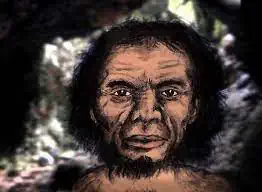

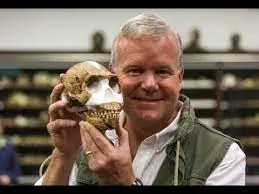


With all respect, making sweeping conclusions about a species and its evolutionary connections with the human tree from just a few hand, foot bones and teeth has to be fraught with error.
As it stands today, we don’t know hardly jack about Homo luzonensis other than it was small. Without the suspected analogue of Homo floresiensis we wouldn’t be having any conversation about this at all.
Other than suspicion, speculation, ideological bias and national pride, there is no evidence — repeat: NO SCIENTIFIC EVIDENCE — that these bone fragments dated many tens of thousands of years ago have anything to do with any modern peoples inhabiting the region today. Someone explain how I’m getting this wrong, and be specific please !
“The only other Homo with curved fingers is Homo luzonensis another archaic pygmy from the Philippines…”
Errrr….how about Homo naledi ?
Premature speculation can be cured with therapy. It’s called more evidence.